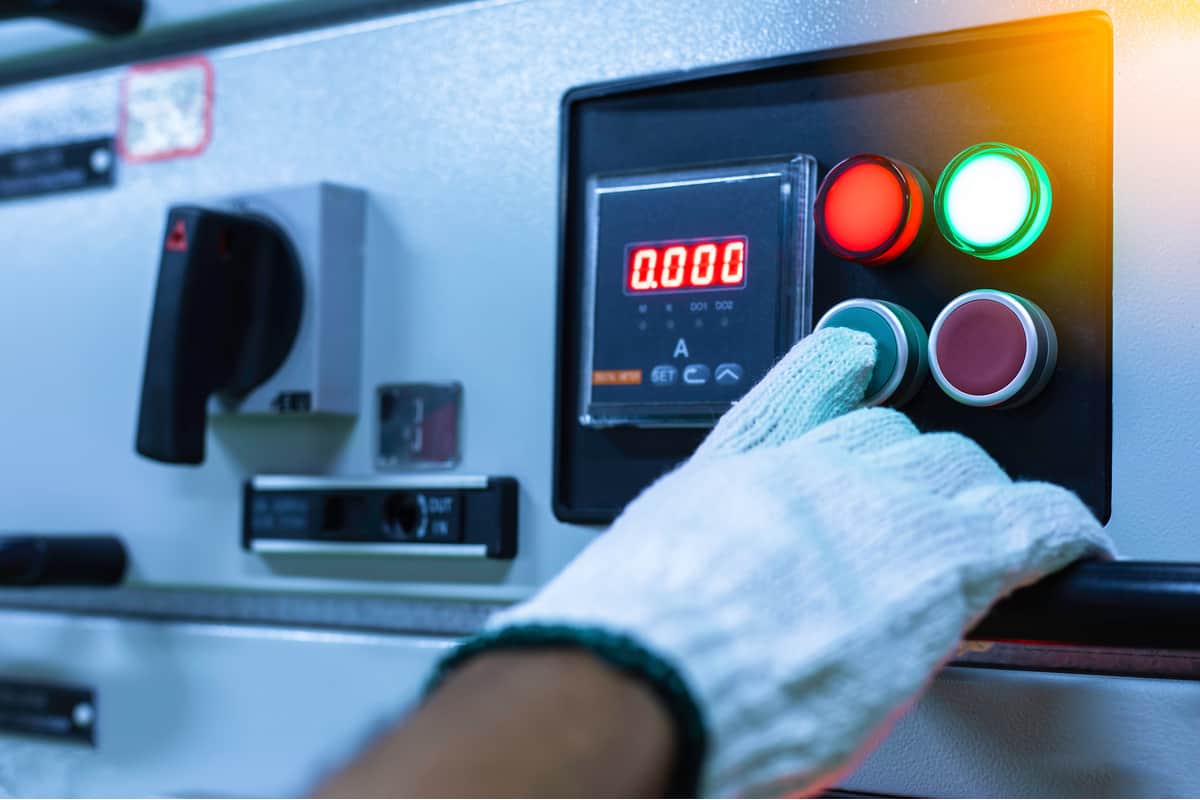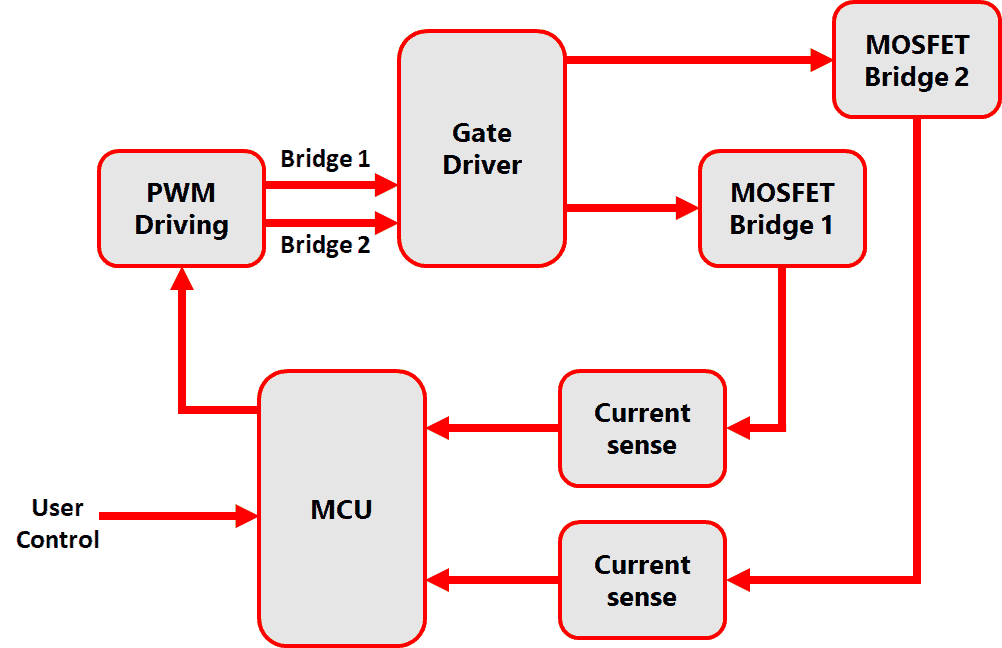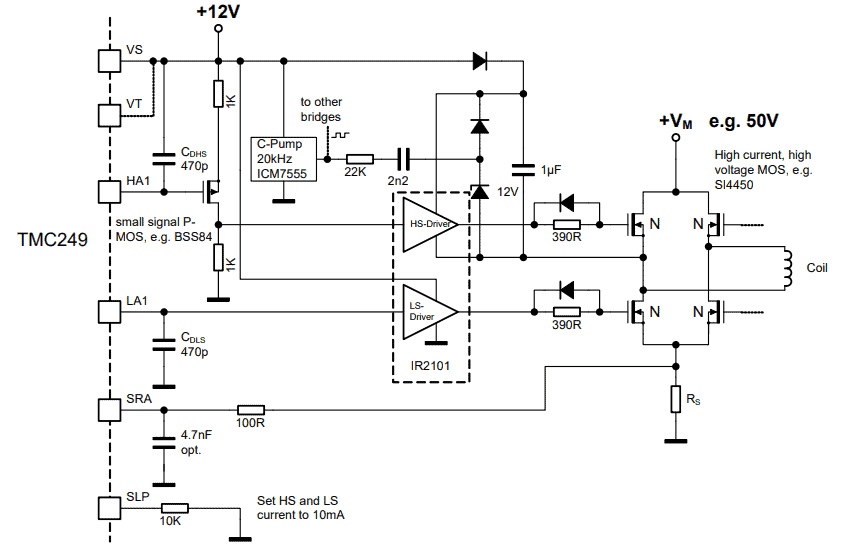
Behind this control panel lies a motor control circuit with dual half-bridge or full-bridge topology.
Motor control solutions can be intimidating for new designers, but they have surprisingly simple topology and driving mechanisms. A full-bridge driver circuit has applications in precision motor control, power regulation, and other areas like industrial lighting, and there are integrated solutions to help designers quickly develop new, low-to-moderate power systems.
If you’re designing an electromechanical system and require precision motor control, a dual full-bridge MOSFET driver enables multiple motor drives with high efficiency. Like many ICs, these components have varying levels of integration, but they offer a low-cost, high-reliability option with a small footprint and few required peripherals. Be sure to follow these guidelines when selecting a dual full-bridge MOSFET driver component for motor control.
Dual Full-Bridge MOSFET Driver Selection
The criteria for selecting a dual full-bridge MOSFET driver are similar to the criteria used to select any other MOSFET driver (e.g., single/dual half-bridge, single MOSFET, or single full-bridge). These components differ in their level of integration, driving voltage level, and control methods. Pay attention to these specifications when selecting a dual full-bridge MOSFET driver:
- PWM generation: MOSFETs in power regulators and motor controllers can be driven with PWM signals, which need to be generated with a PWM driver. Higher current systems often require these drivers to be placed separately, while some ICs integrate the PWM driver onto the die.
- Driving level and pulse current: PWM driving must push the MOSFET into the ON state by passing some voltage threshold. Make sure the PWM voltage will rise above the turn-on threshold for the MOSFET. Also make sure the inrush current pulse will not exceed the MOSFET limits.
- Allowed feedback voltage/current: Some components will include an integrated control circuit, which must sense the full-bridge drain current and adjust the driving voltage so that it stays around some desired value (e.g., such as in servo motors). The input voltage/current on this pin often sits around logic levels and should be matched to the bridge circuit current.
As we can see above, a single or dual full-bridge MOSFET driver needs to be paired up with the MOSFETs it will be driving. If there is no internal control circuitry, external components will be needed to provide current sensing and control, as shown in the block diagram below.

Typical dual full-bridge MOSFET driver topology.
For lower current applications, there are highly-integrated, dual full-bridge MOSFET driver components that help expedite system design.
An Example Dual Full-Bridge MOSFET Driver Application
One example dual full-bridge MOSFET driver for multi-motor control is the TMC249/A by Trinamic. This component integrates two full-bridge driver circuits, each with integrated PWM generation, for driving two external H-bridge circuits (each with 4 MOSFETs). This component also integrates a feedback and control circuit for monitoring and adjusting the current draw in the H-bridge circuit to ensure stability. With two independent, external H-bridge circuits, this component can be used to control 2 motors with current draw not exceeding 6 A, such as small stepper motors.
The schematic below shows an example application circuit with one of the drivers in the TMC249/A (note the connections on the right side of the H-bridge circuit are omitted for clarity). Feedback is provided through a sense resistor (Rs) and RC filter, which is then fed back into the internal control module in the IC.

TMC249 example application circuit from the TMC249/A datasheet.
The other task in this type of application is to choose the appropriate MOSFETs. Using power MOSFETs with high saturation current rating and high breakdown voltage will give an over-designed system, but these parts are inexpensive and will ensure such a system can withstand power surges. It is generally not recommended that designers place MOSFETs in parallel in this type of application unless they are familiar with suppressing strong transient oscillations in each transistor. Also, some components are not designed to support these applications, leading to potential component failure. Be sure to check application specifications in your datasheet when selecting components for H-bridge motor driver circuits.
Find the Components You Need for Motor Control
Components for motor control aren’t difficult to find, and there are many integrated solutions to help you design motor control systems operating at low or high power. Dual full-bridge MOSFET driver ICs with integrated control, like the Trinamic T249/A, are better suited for low-current applications, while higher current driver and control circuits need to be built from separated components. In many cases, you can simply use an MCU and an integrated full-bridge MOSFET driver with some other ICs to provide control and feedback.
Once you select components for your motor driver, you’ll need to find footprints and sourcing information for your components. A quality electronics search engine service can give you access to this data for your components:
- Manufacturer-verified PCB footprints and STEP models: Designers shouldn’t need to create every footprint and 3D CAD model from scratch. The best component search services can give you access to manufacturer-verified models for use in your designs.
- Simulation models: High power motor controller components often need simulations to verify design safety and reliability. You can use a parts search engine to find SPICE simulation models for your components.
- Component datasheets: Some component datasheets can be difficult to find, but the best component search engines will compile this information in one place.
- Sourcing information: Designers need stocks, prices, lead times, and distributor information to ensure they can meet their design schedules and budget.
Whether you need a set of discrete components or a dual full-bridge MOSFET driver IC, try using the electronics search engine features in Ultra Librarian when you need to find components for your new design. Ultra Librarian gives you access to datasheets, technical specifications, and verified component models that can be imported into popular ECAD applications. You’ll also have access to sourcing information from worldwide distributors.
Working with Ultra Librarian sets up your team for success to ensure any design is going through production and validation with accurate models and footprints to work from. Register today for free.








